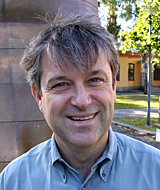Sweden’s most important plant will be mapped
You will soon be dancing around your Christmas tree and you must give a thought to the beautifully decorated tree which is one of our country’s most important plants. Without the wood from the conifer tree which has provided fuel for camp fires and building material for housing, most of Sweden, in all likelihood would never have been populated. Now researchers at KTH, KI, SLU and Umeå University will be receiving SEK 75 million to map out the genes of the conifer.

The forestry industry is the industry which contributes the most to Sweden’s trade balance and general prosperity and the conifer tree today is the most important tree species for the Swedish forestry industry.
“The research will for example provide us with opportunities to develop genetic tests for the tree’s various qualities, for example the heat value of the wood, its tolerance to dryness and its resistance to disease. This will take place in exactly the same way as the mapping of the human genome, says Stefan Jansson, Professor at Umeå Plant Science Centre.
Fellow researcher Jan Stenlid, Professor at the Swedish University of Agricultural Science in Uppsala agrees.
“For example we will be given completely new opportunities to understand and thereby combat the two major scourges of the Swedish forestry industry,” root rot and pine weevil, says Jan Stenlid.
Professor Joakim Lundberg, gene researcher at KTH, adds that it is only now that the mapping of the conifer can be carried out. All conifer trees have 12 chromosomes but they are extremely large; one cell from a spruce or a pine tree has seven times as much DNA as a cell from a human being.
“Starting this project one year ago would have been impossible. The budget necessary would have two have been much greater, and the possibilities of really succeeding with the project would have been much poorer. New DNA sequencing techniques have however developed extremely quickly, and we will be given access to this via the government’s major funding to Science for Life Lab which is intended to become Northern Europe’s largest centre for gene research,” says Joakim Lundeberg.
Coniferous trees have dominated the globe for hundreds of millions of years and have survived several geological catastrophes. As a result the researchers aim to find out whether or not the conifers and in particular the spruce carries the “perfect genetic composition”.
In order to succeed with this, it is therefore envisaged that a comprehensive Swedish research team consisting of researchers from Umeå Plant Science Centre, a cooperation between Umeå University and the Swedish University of Agricultural Science, and researchers from KTH and KI, will tackle this enormous challenge. This will be done with the help of a grant of SEK 75 million from the Knut and Alice Wallenberg Foundation.
For further information contact:
Joakim Lundberg at 070 – 458 23 46 or joakiml@biotech.kth.se.
Pär Ingvarsson at 070 – 848 59 77 or pelle@wallace.emg.umu.se.
Stefan Jansson at 070 – 677 23 31 or stefan.jansson@plantphys.umu.se.
Ove Nilsson at 070 – 286 90 82 or ove.nilsson@genfys.slu.se.
Peter Larsson

